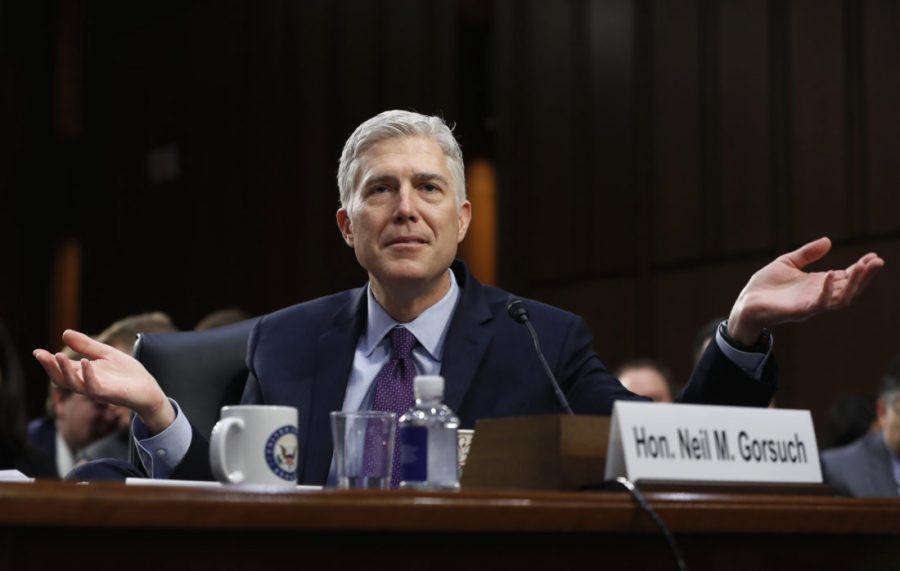Gorsuch Confirmation Challenges Democrats
Neil Gorsuch approved as 113th justice of the Supreme Court on Friday.
President Trump’s Supreme Court Justice Nominee, Neill Gorsuch, underwent much criticism and debate before passing his confirmation.
The Senate officially filled the ninth seat to the Supreme Court on Friday, April 7, accepting Judge Neil Gorsuch as the next lifelong member. With a 54-45 vote, the proceedings set up a 5-4 conservative tilt on the court, ending the year-long political battle to fill the crucial spot.
Gorsuch was confirmed in place of the late Justice Antonin Scalia who passed away in February 2016. President Trump and his followers felt Gorsuch was the best fit, helping form the President’s electoral win in November with a promise to place another conservative in the Supreme Court. Social studies teacher Amy Skonberg has been following the confirmation for a while.
“The vacancy really should have been filled by President Obama,” Skonberg said. “Now, centrist nominees will only be nominated when the Senate and Presidency are controlled by different parties. I don’t believe this is good for our democracy, as most Americans are centrist.”
“He is an incredibly qualified individual for the position,” junior Ben Lee said. “His work in the lower courts has been valued and the Supreme Court has upheld a vast majority of his rulings.”
Gorsuch is familiar to the court, serving as law clerk in 1993 and 1994 to Justice Byron R. White, according to The New York Times. However, many Democrats showed resentment towards his placement, as confirmation for President Barack Obama’s nominee Merrick Garland was blocked by the Republican-led legislature. Some Democrats acknowledge that Gorsuch provided evasive answers during his confirmation hearing, stirring the pot further. Democratic concerns over Gorsuch led Senate Democrats to filibuster Gorsuch’s nomination. Republicans countered the filibuster, which would have effectively ended Gorsuch’s nomination, with the “nuclear option” on Thursday. The nuclear option is a method of pushing through nominees by changing Senate rules to reduce the number of votes necessary to confirm positions. Senate Democrats used the nuclear option during Obama’s presidency for all presidential appointees but Supreme Court nominees.
Senate Majority Leader Mitch McConnell led the charge to using the nuclear option, which lowered the required number of votes to confirm a nominee to 51. While some consider the confirmation to be a victory for Republicans across the nation, others remain worried that the rules change will have larger implications down the road. This may be warranted; the Supreme Court was designed to be immune to partisan fighting, and instead is supposed to be composed of popular, qualified justices. Lowering the threshold to 51 will allow future vacancies to be easily filled by the majority party in the Senate with little room for dissent.
The 49-year-old Gorsuch took his oath on Monday, returning the court’s membership to nine and confirming him as the 113th Justice of the Supreme Court.


